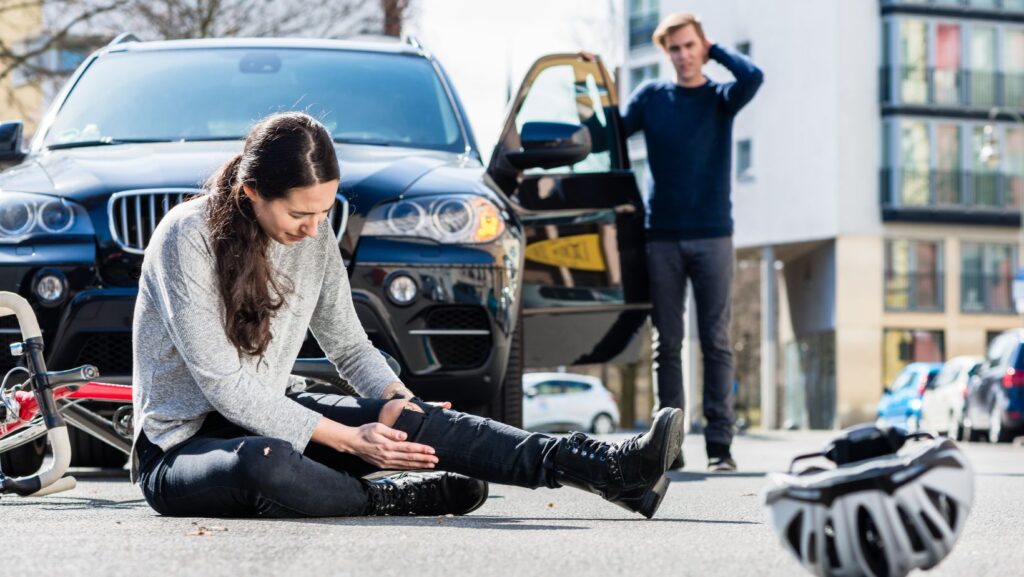Pedestrian accidents pose significant risks for everyone, but the elderly are particularly vulnerable to severe injuries and complications. With age comes a decrease in physical resilience, making older adults more susceptible to fractures, head injuries, and prolonged recovery times. The impact of a pedestrian accident on an elderly person can be devastating, affecting their physical health, emotional well-being, and overall quality of life.
For elderly victims of pedestrian accidents, navigating the medical and legal aftermath can be daunting. Seeking guidance from a Seattle pedestrian injury lawyer is crucial. An experienced attorney can help elderly victims and their families secure the necessary medical care and pursue compensation for their injuries and losses, ensuring their rights are protected and their needs are addressed.
Increased Risk of Severe Injuries
Elderly pedestrians are at a higher risk of sustaining severe injuries in accidents. As people age, their bones become more brittle and their bodies less resilient, making them more susceptible to fractures, especially in the hips and legs. These injuries can be life-threatening and require extensive medical treatment, including surgery and prolonged rehabilitation.
In addition to fractures, elderly victims often suffer from head injuries, which can have serious consequences. Even a minor fall can lead to a traumatic brain injury (TBI) in older adults due to their reduced ability to absorb shock. TBIs can result in long-term cognitive impairments, affecting memory, concentration, and daily functioning. The combination of physical frailty and the potential for severe injuries makes pedestrian accidents particularly hazardous for elderly individuals.
Prolonged Recovery and Complications
The recovery process for elderly victims of pedestrian accidents is often longer and more complicated compared to younger individuals. Older adults may take longer to heal from fractures and other injuries due to slower cell regeneration and existing health conditions such as osteoporosis or diabetes. These factors can extend recovery times and make it difficult for them to regain their previous mobility and independence.
Furthermore, complications during recovery are more common in elderly patients. Infections, pressure sores, and reduced mobility can lead to additional health problems, requiring ongoing medical attention and care. The physical and emotional toll of a prolonged recovery can also impact their quality of life, leading to feelings of frustration, depression, and decreased self-esteem.
Impact on Independence and Mobility
One of the most significant effects of pedestrian accidents on elderly victims is the loss of independence. Many older adults pride themselves on their ability to move independently, whether running errands, visiting friends, or enjoying daily walks. Injuries from an accident can severely limit their mobility, forcing them to rely on caregivers or family members for assistance.
This loss of independence can have profound psychological effects, leading to a decrease in overall life satisfaction and an increase in feelings of helplessness and isolation. Elderly victims may experience a diminished quality of life as they struggle with the physical and emotional challenges of losing their autonomy and the freedom they once enjoyed.
Emotional and Psychological Impact
The emotional and psychological impact of pedestrian accidents on elderly victims can be substantial. Experiencing a sudden traumatic event can lead to anxiety, depression, and post-traumatic stress disorder (PTSD). Older adults might also fear walking outside again, decreasing their willingness to engage in social activities and further isolating themselves.

The psychological stress of coping with injuries and the recovery process can exacerbate existing mental health conditions or contribute to the development of new ones. Elderly victims may require psychological support or counseling to help them navigate these challenges and regain their sense of security and confidence.
Financial Burdens and Legal Challenges
Pedestrian accidents often lead to significant financial burdens for victims, especially the elderly. The costs associated with medical care can be overwhelming, including expenses for hospital stays, surgeries, rehabilitation, and ongoing treatments. Covering these unexpected and substantial costs can be extremely difficult for many older adults who live on fixed incomes. The financial pressure adds extra stress to an already challenging recovery process, making it essential to seek support and guidance.
Navigating the legal complexities following a pedestrian accident can be particularly daunting. Understanding victims’ rights, dealing with insurance companies, and pursuing fair compensation for injuries and damages require specialized knowledge and expertise. Working with a Seattle pedestrian injury lawyer can provide invaluable assistance in managing these legal challenges. An experienced attorney can advocate on behalf of the victim, helping to secure the compensation needed to cover medical bills, lost wages, and other related expenses, thus easing the financial burden and allowing victims to focus on their recovery.
Preventive Measures for Elderly Pedestrians
Elderly pedestrians can take several proactive steps to enhance their safety and reduce the risk of accidents. By adopting these measures, they can improve their visibility, stay alert to potential hazards, and navigate city streets more safely. Here are some key preventive strategies:
Increase Visibility:
Wear Bright or Reflective Clothing: Donning bright or reflective clothing helps make elderly pedestrians more visible to drivers, especially during low-light conditions such as dawn, dusk, or nighttime. Reflective accessories or vests can significantly increase visibility.
Use Designated Crosswalks and Signals:
Cross at Designated Crosswalks: Always use designated and pedestrian signals when crossing streets. These areas are specifically designed for pedestrian safety and increase the likelihood of being noticed by drivers.
Stay Alert and Avoid Distractions:
Avoid Using Mobile Phones: Refrain from using mobile phones or engaging in other distractions while walking. Staying focused on one’s surroundings helps one quickly react to potential hazards.
Choose Safe Walking Routes:
Avoid High-Traffic Areas During Peak Times: Minimize exposure to busy streets and traffic congestion by avoiding high-traffic areas during peak hours.

Choose quieter streets or paths with fewer vehicles, making walking safer and less stressful.
Use Walking Aids if Necessary:
Consider Mobility Assistance Devices: Devices like personal alarms or whistles can help alert others in emergencies.
Community and Infrastructure Improvements
Communities and local governments play a crucial role in enhancing the safety of elderly pedestrians. Infrastructure improvements, such as pedestrian-friendly crosswalks, better lighting, and traffic calming measures, can make streets safer for older adults. These enhancements can reduce the likelihood of accidents and create a more secure environment for all pedestrians.
Community programs that offer safe walking routes and promote pedestrian safety education can also benefit elderly residents. Encouraging local businesses and residents to support these initiatives helps build a safer, more inclusive community where elderly pedestrians can feel confident and secure while navigating their neighborhoods.



